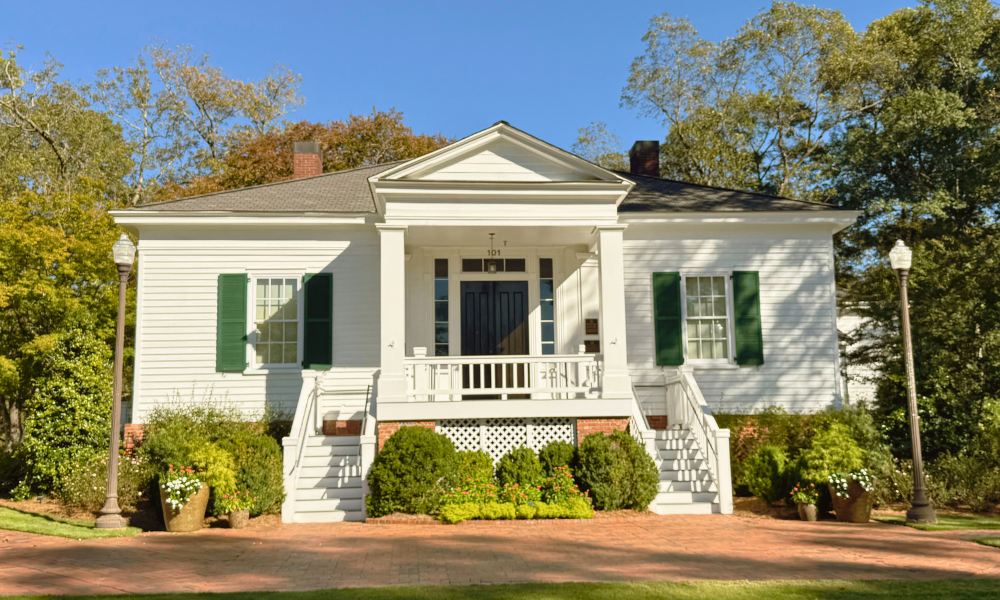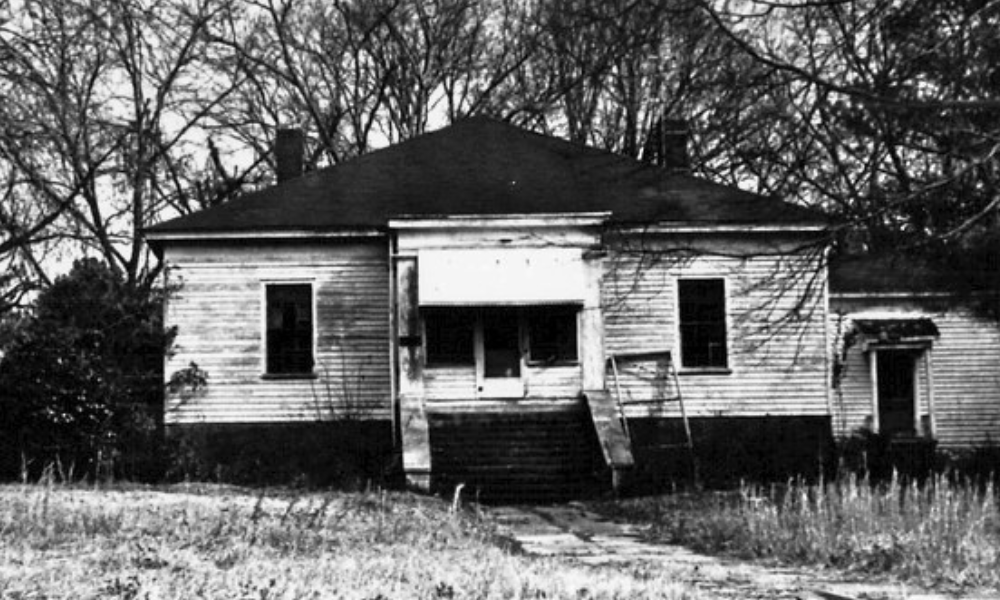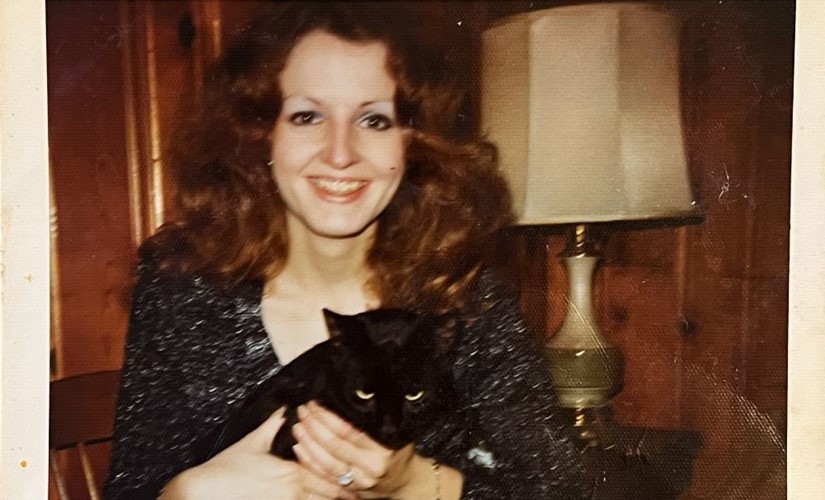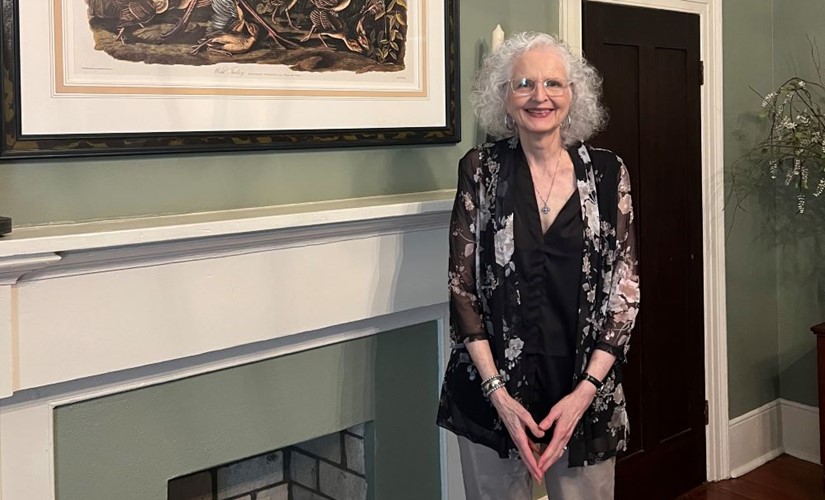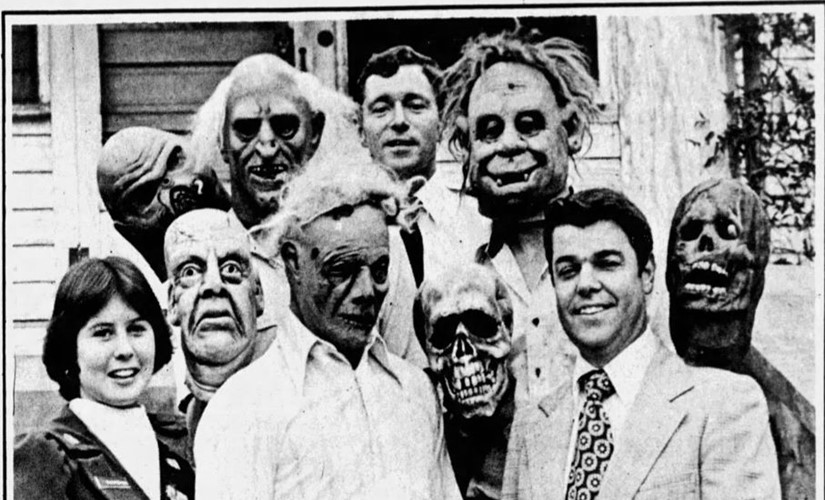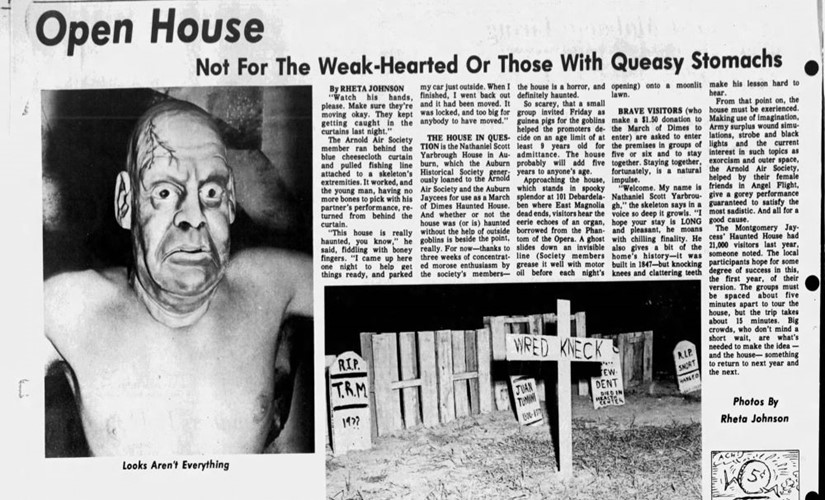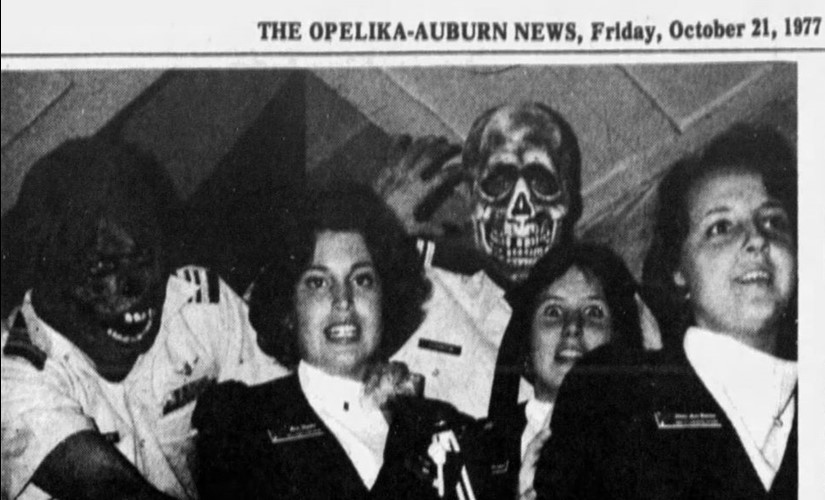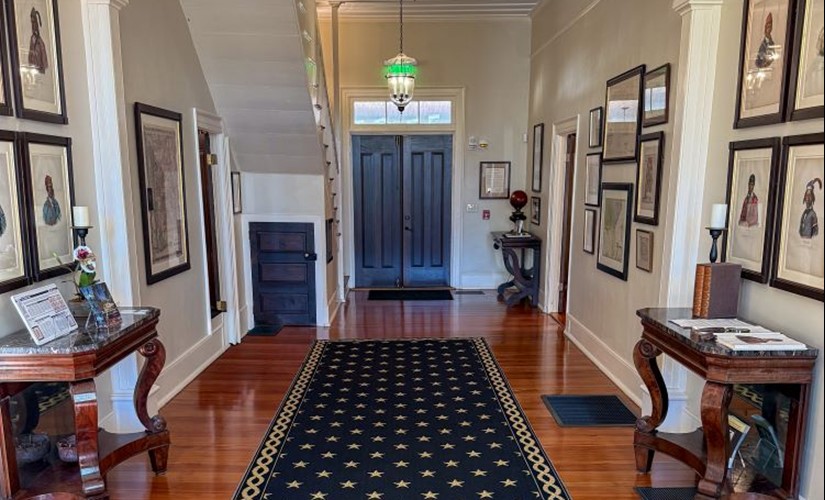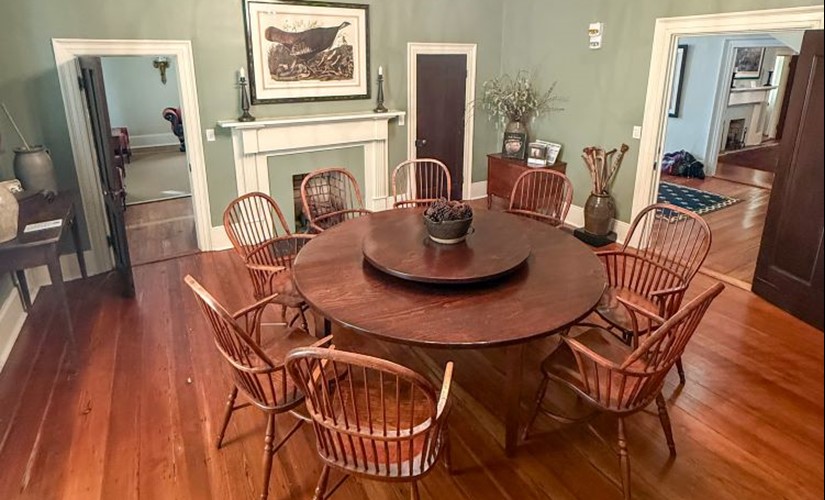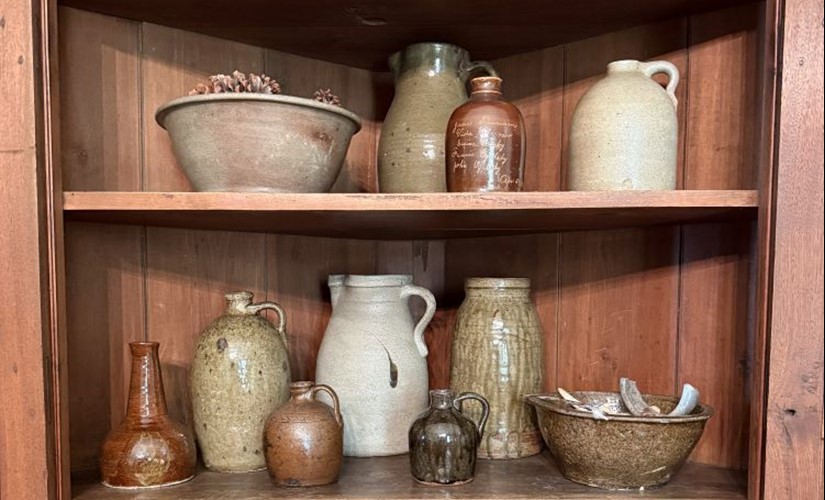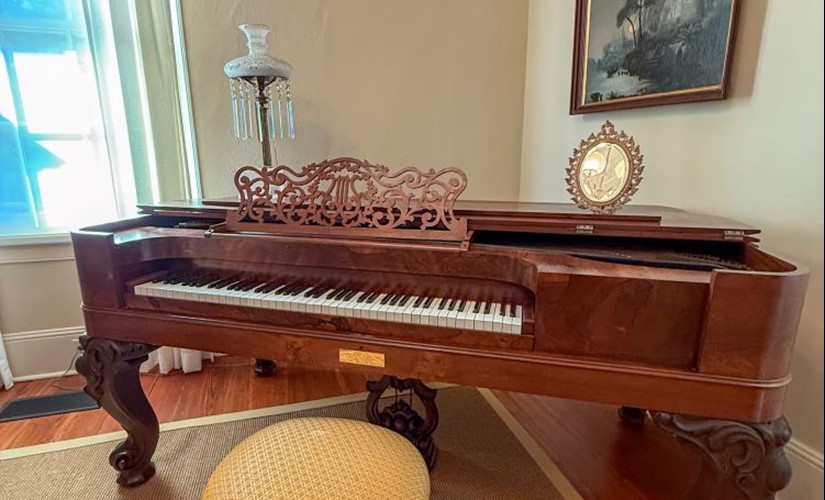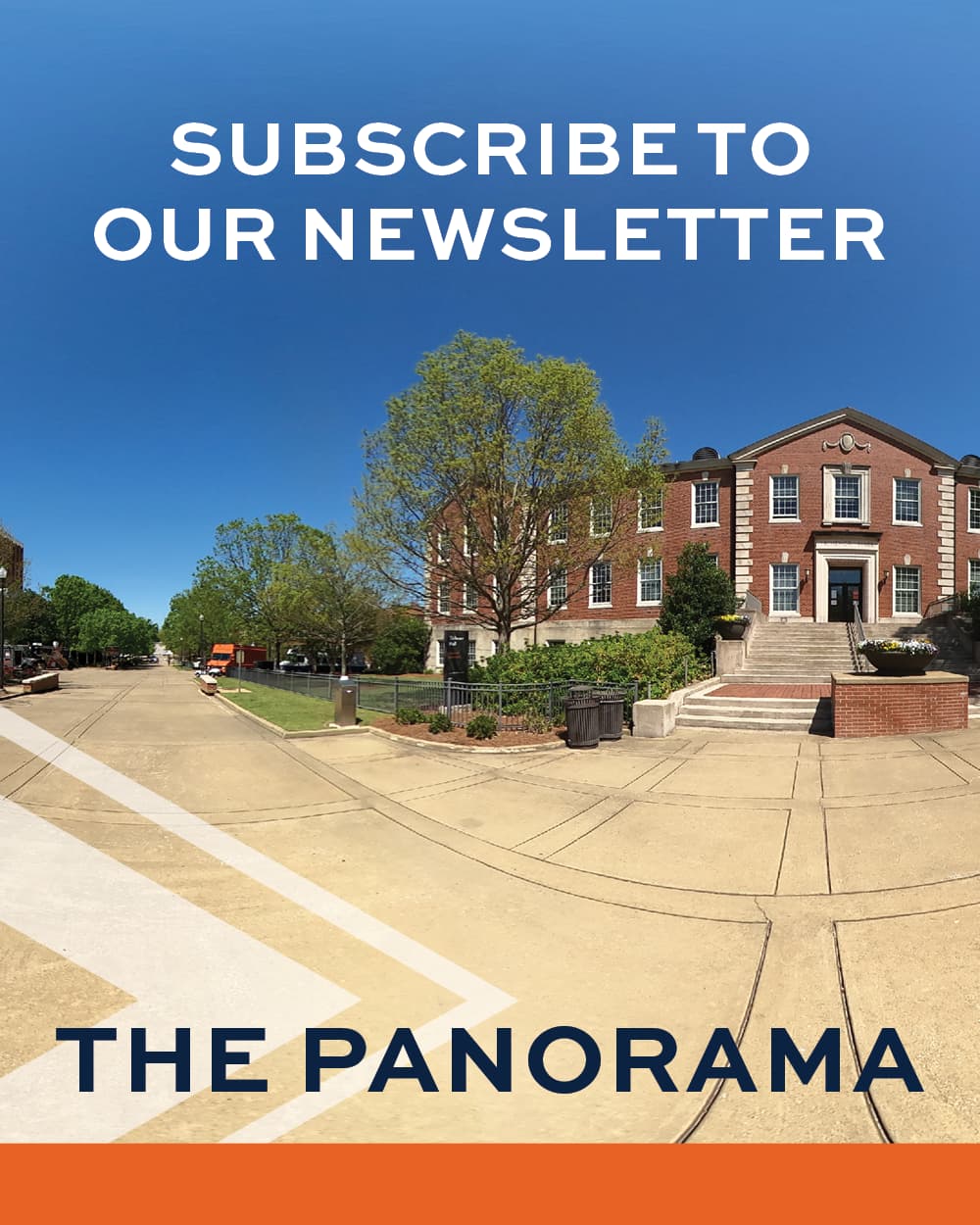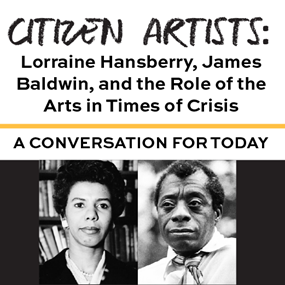hAUnted: Ghosts of Pebble Hill
Something’s haunting the halls of the College of Liberal Arts’ outreach center.
Pebble Hill, home to the Caroline Marshall Draughon Center for the Arts & Humanities (CMDCAH), has stood in Auburn for more than 170 years. It’s seen wars, the end of slavery, the creation of Auburn University and countless people live and die. The people are gone, but their stories remain, and you can hear them at Pebble Hill.
To people across Auburn, Pebble Hill has been a haunted house, real and created, as well as a center to reflect on what it means to live.
Forever Home
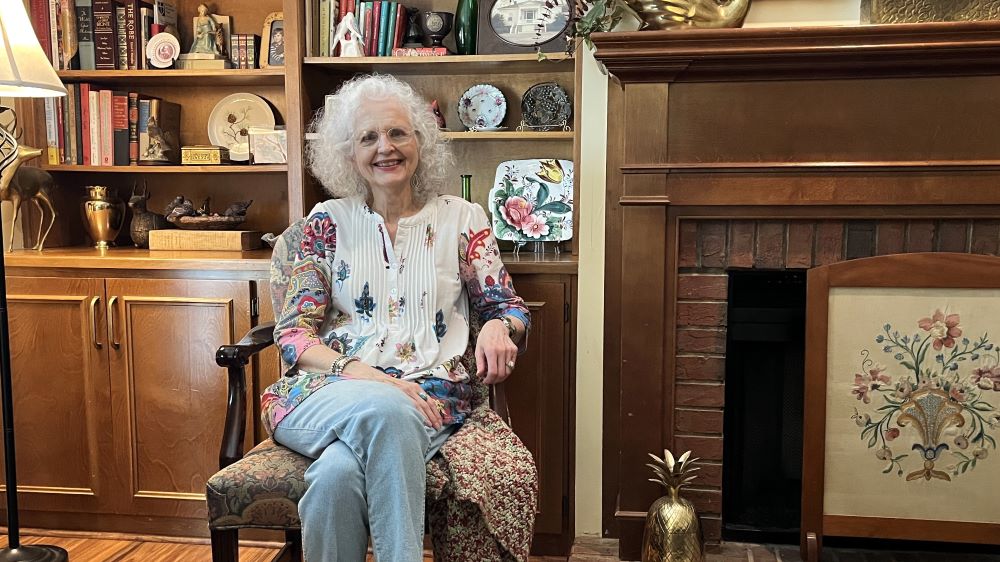
Kathy Bonner Herren, former Auburn student and employee, moved into an apartment inside Pebble Hill in the summer of 1971. During those humid summer nights at twilight, strange things happened.
One night, Herren woke up feeling a “heaviness” around her body and her black cat, Duncan, looking around the room at something she couldn’t see. On another, she was alone in the sitting room when she heard a loud huff of breath, which sent Duncan scrambling under the bed covers.
Her roommate told her it was “the ghost.”
“When I would tell them some things, some people did not believe me, they just laughed,” Herren said. “Other people, including my mother, said ‘I wouldn't spend one night in that house,’ and the rest would say, ‘You need to get another apartment.’ And I said, ‘Well, I don't feel like I'm in any danger here. I don't feel evil here, but something's happening.’”
Herren wasn’t the only witness. A guest in another apartment asked her about the sound of boots marching down the hall, but when they opened the door, no one was there. Her roommate’s bathroom door would fly open on its own, and they both saw a white light flash across corners of their rooms.
The most memorable incident, Herren said, happened when she and her roommate were listening to music, when they suddenly heard “the most agonizing moan of human suffering.” They both ran from the house and didn’t return until an hour-long drive calmed their nerves.
Curious, Herren began researching paranormal activity. She believes her experience best aligns with a “residual haunting” – energy trapped in the house from previous trauma that is triggered by humid weather, twilight and music.
Based on her research into the house, she believes that the history of the Civil War, the enslaved people who worked there and the family tragedies that occurred in the house could contribute to the feeling of sadness she often felt there.
“It can be anything that dramatically affects a human being in their living situation. And there's so much energy produced when you have these experiences that it lingers,” Herren said. “I just don't think that there's any way that the structure could go through all of that without having retained the energy of the people who have made it what it is.”
Despite the strange happenings, Herren said it’s always felt like home to her. She’s grateful that it’s still standing as a center for arts and humanities, and encourages visitors to read up on its history before they visit.
“It’s seen the best of life and the worst of life,” Herren said. “Think about that as you walk through, because there’s always been that saying, ‘If only houses could talk.’ Houses really can talk if you are just the person that can hear it.”
Haunted House
Just a few years after Herren lived in the house, Auburn Mayor Ron Anders ’86 visited the haunted house.
This time, the “haunted house” was a nonprofit benefit for March of Dimes organized by the Arnold Air Society and Angel Flight at Auburn University. For $1.50, guests walked through more than a dozen “scare stations” inside Pebble Hill, which was then on loan from the Auburn Historical Society.
Anders was in eighth grade at the time of the event in October 1977. He said Pebble Hill’s empty, off-the-road location made it perfectly scary.
“When I think of Pebble Hill, I think of it as being without question, the best, scariest haunted house I ever went to my whole life,” Anders said. “I'll never forget it. Fifty years later, every time I go down Magnolia and look up at Pebble Hill, I just think haunted house, haunted house, haunted house.”
The Auburn Jaycees helped with effects, and the student organizers discouraged “children younger than nine years of age” from attending. Scare stations included talking skeletons, moonlit tombstones, mad doctors and chainsaw-wielding monsters. The house had to close shortly after opening to repair some of the sets, because people got so scared on opening night that they tore down parts of the scenery to escape the house.
One organizer told the Opelika-Auburn News that the house really was haunted, reporting how their locked car mysteriously moved while parked.
The event saw more than 4,000 people attend and raised more than $6,000 for March of Dimes, an equivalent of around $32,000 today.
Decades later, people don’t remember Pebble Hill as a haunted house, but they might know it for that kind of good work for the community.
Anders said Auburn’s pillars of safety and quality education reflect the values of the city. Pebble Hill is an important part of that mission by offering a safe, educational space for people to learn and connect with history.
“I think it's wonderful that it's got a place in our community now, and it's valued as a place of history and good work and collaboration,” Anders said. “It’s got its own story to tell, it's real own story to tell, that the haunted house is just a sidebar, but I'm thankful for what Pebble Hill has become today.”
Center for Arts & Humanities
Today, Pebble Hill is renovated and reimagined into a space for learning and reflection.
The inside of the house looks more like a museum, captured in time with antique furniture, pottery and folk art, and portraits of those who lived in and around the house since its construction in 1847.
“The house and collections create opportunities for reflection on the human experience, our purpose and mission,” said Mark Wilson, CMDCAH director. “Whether it’s Creek portraits, historic furnishings, pottery or photos, visitors have a chance to consider the past and its meaning for their lives today.”
The only odd thing you might see walking the halls today is the portrait of Bertha Mae Yarbrough, first wife of Dr. Cecil S. Yarbrough, who lived and died in the house in the early 1900s. Staff report that the portrait hangs crooked on the wall, no matter where you place it in the house.
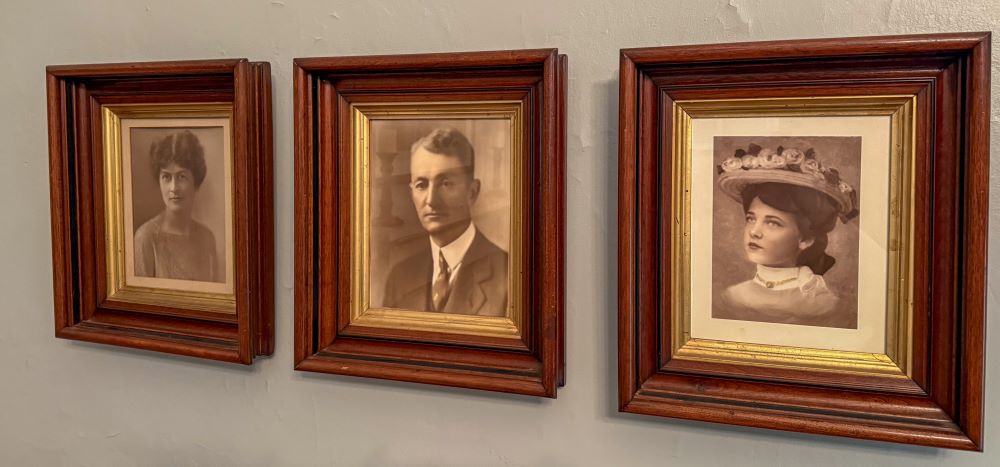
Whether it’s a damaged frame or Bertha Mae’s spirit expressing anger that Cecil’s second wife, Mary Strudwick, and others have been in her house, Pebble Hill has no shortage of stories to tell.
“Pebble Hill invites people to linger and learn. The exterior of the house and its furnishings have changed over time, and for the last four decades it has served a functional purpose for Auburn University. But its ‘sense of place,’ I’d say, is unchanged,” Wilson said. “First-time visitors don’t really know what to expect when they turn the old door handle and peek inside. Each room becomes a discovery, and visitors leave knowing more about history —and hopefully themselves — as a result.”
Learn more about Pebble Hill, take a tour and see its events calendar at the CMDCAH website.
Tags: Center for the Arts and Humanities Community, Outreach and Engagement
